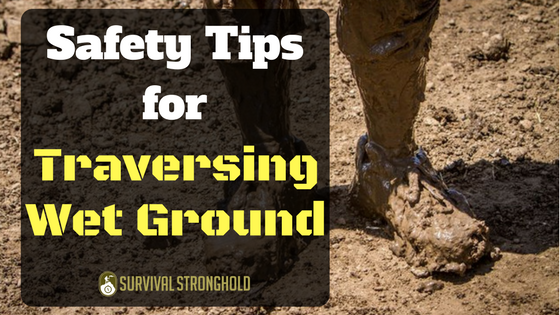If you find yourself trekking across long distances or happen to be in a very wet environment, you might be faced with the difficult task of crossing very moist, muddy ground.
Any veteran who’s been in a tropical battle zone can probably tell you how dangerous this ground can be. A muddy path doesn’t seem that serious to the untrained eye, but after you’ve been slogging through it for a bit, you don’t want to find out the hard way just what a challenge it can be.
Dangers of wet ground
First of all, very wet ground is unstable. You can easily twist or sprain an ankle, and you will also not necessarily always be able to see how deep your foot will go.
Continuously pulling your boots or shoes out of thick mud can also be very draining, and traversing wet ground can end up taking up significantly more of your energy than dry ground will.
Most of all, the threats of the moisture itself are probably the most dangerous. If your boots and shoes get soaked, you could end up with sores or blisters on your feet that, in a survival situation, could be deadly. You might also come into contact with parasites or develop a fungal infection from the moisture.
Safety tips
If you can, avoid wet ground at all costs. It’s actually better to just hike straight through water itself than wet ground, so if it’s between a low creek and mud, just walk straight right through the creek.
Seek out the driest spots, and try to “island hop” between them. Take breaks on any dry spots you might find, as much as possible. Walk quickly if it doesn’t exert too much energy, so as not to let your boots sink in as much with every step.
Keeping your feet as dry as possible is the best chance you have to avoid any sores. Rest for 15 minutes out of every hour, taking your socks and your shoes off and letting everything dry out. Letting the moisture of wet socks soften the skin on your feet can be detrimental, so give your feet plenty of time to dry out.
You can even remove your socks completely when traversing wet ground, as wet socks can soften up your feet considerably and if you’ve got a good pair of boots, they actually won’t blister your feet as much as wet socks might.
You don’t want to find out the hard way what a challenge wet ground can be to any survival efforts. Remember these important tips to make the experience much safer.


